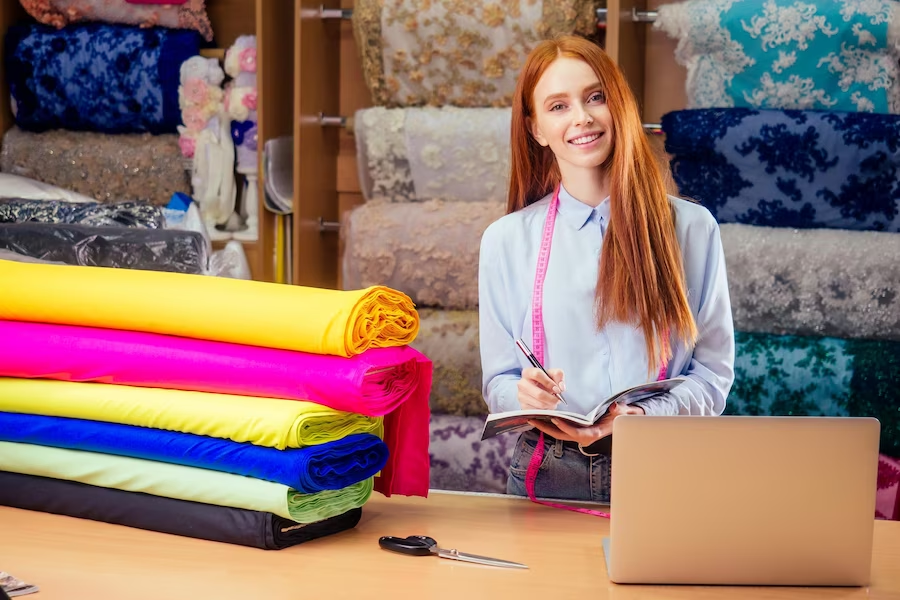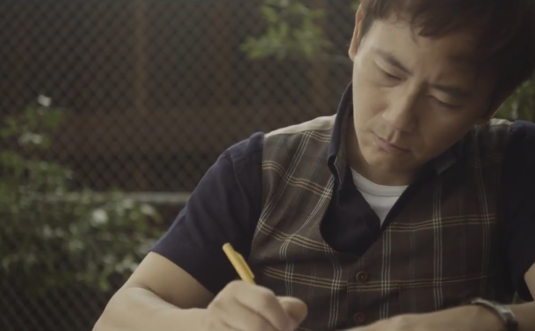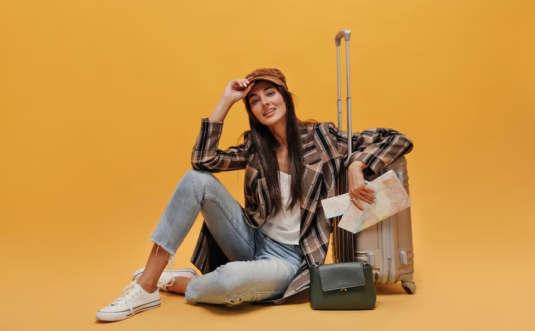Fabric is the soul of design, and it is of paramount importance for fashion designers to find the best resources for their creative endeavors. Whether it’s the allure of silk, the comfort of cotton, or the versatility of polyester, the right fabric can elevate a design from mediocre to magnificent. Below, we delve into some of the favorite haunts of designers when it comes to sourcing fabric.
1. Traditional Fabric Stores
Traditional fabric stores have long been a staple resource for designers seeking materials to bring their creative visions to life. These stores, whether part of a larger chain or independent businesses, offer a wide array of fabric options to cater to the diverse styles and needs of designers.
Advantages of Traditional Fabric Stores
- Variety: One of the primary advantages of traditional fabric stores is the immense variety they offer. These stores stock an extensive range of fabrics, ensuring that designers have access to an assortment of options to suit their specific requirements. Whether a designer is looking for luxurious silk, breathable cotton, warm wool, or innovative synthetic fabrics, traditional fabric stores are likely to have a diverse selection available;
- Hands-on Experience: The hands-on experience provided by traditional fabric stores is invaluable for designers. Being able to physically touch and feel the materials allows designers to gain a deeper understanding of their characteristics, such as texture, weight, and drape. This tactile interaction aids in evaluating how the fabric will behave in a design, facilitating more informed decisions. By examining the fabric firsthand, designers can assess its quality, gauge its suitability for different purposes, and ensure it aligns with their aesthetic vision.
Examples of Traditional Fabric Stores
| Store Name | Locations | Notable for |
|---|---|---|
| Mood Fabrics | New York, Los Angeles | Mood Fabrics gained widespread recognition through its feature on the popular reality TV show “Project Runway.” This exposure catapulted the store into the spotlight, making it a go-to destination for designers in search of a vast selection of fabrics. Mood Fabrics is renowned for its extensive inventory, which covers a broad spectrum of materials, colors, patterns, and textures. |
| Britex Fabrics | San Francisco | Britex Fabrics has carved a niche for itself as a purveyor of luxury fabrics and unique finds. Designers seeking high-end materials and rare textiles often turn to Britex Fabrics for their distinctive offerings. The store prides itself on sourcing exceptional fabrics from around the world, making it a treasure trove of inspiration for designers looking to add a touch of opulence to their creations. |
| The Fabric Store | Australia, New Zealand, Los Angeles | The Fabric Store differentiates itself by focusing on natural and sustainably sourced fabrics. With growing awareness of environmental impact, many designers prioritize eco-friendly materials. The Fabric Store caters to this demand by offering a range of fabrics that are not only ethically produced but also exhibit exceptional quality and aesthetics. Their commitment to sustainability aligns with the evolving values of the design industry. |
2. Fabric Markets
Fabric markets hold a special place in the hearts of designers due to the diverse range of fabrics they offer. These markets become a sanctuary where designers can immerse themselves in a sea of textiles, colors, patterns, and textures, inspiring their creative pursuits. Let’s explore some notable fabric markets that have captured the attention of designers worldwide:
- Queen Victoria Market, Melbourne: Located in Melbourne, Australia, Queen Victoria Market stands as a designer’s dream come true. This vibrant market boasts a vast array of fabrics sourced from around the world. Designers can find fabrics ranging from luxurious silks and delicate laces to durable denims and colorful prints. With its diverse selection, Queen Victoria Market caters to a wide range of design aesthetics, making it a go-to destination for designers seeking inspiration and unique materials;
- Dongdaemun Market, Seoul: Situated in the heart of Seoul, South Korea, Dongdaemun Market is a bustling hub of fashion and textiles. Renowned for its vibrant atmosphere, this market is a treasure trove for designers in search of the latest trends in Korean fabric design. Dongdaemun Market offers a vast array of fabrics, including traditional textiles, modern prints, and innovative materials. Beyond fabrics, designers can also find an extensive range of accessories, trimmings, and notions to complement their designs. The market’s dynamic nature and its constant flow of new inspirations make it a popular choice among designers seeking fresh and cutting-edge materials;
- Marché Saint-Pierre, Paris: Nestled at the foot of Montmartre in Paris, Marché Saint-Pierre exudes an air of sophistication and elegance. This iconic fabric market is celebrated for its luxurious range of haute couture fabrics. Designers flock to Marché Saint-Pierre in search of exquisite silks, sumptuous velvets, delicate lace, and other high-quality materials fit for creating masterpieces. The market’s long-standing reputation for offering the finest fabrics has made it a preferred destination for fashion houses, independent designers, and sewing enthusiasts alike.
The Experience of Fabric Markets
Fabric markets provide an immersive and multisensory experience for designers, captivating their imagination and fueling their creativity. Here are some aspects that make fabric markets truly special:
| Advantage | Description |
|---|---|
| Variety of Fabrics | Fabric markets excel in offering a staggering variety of fabrics, catering to the diverse needs and preferences of designers. They provide access to a wide range of options, including natural fibers like silk, cotton, and wool, as well as synthetic materials and innovative textiles. Designers can explore a multitude of textures, weights, colors, and patterns, opening up a world of possibilities for their designs. |
| Interaction with Vendors | Interacting with vendors at fabric markets can be an enriching experience for designers. These vendors often possess a wealth of knowledge about fabrics and can provide valuable insights into their characteristics, origins, and best uses. Designers can engage in conversations, seek advice, and learn about the latest trends in the industry. Such interactions foster a sense of community and allow designers to connect with like-minded individuals, establishing valuable professional relationships. |
| Sensory Stimulation | Fabric markets engage multiple senses, heightening the creative experience for designers. The bustling atmosphere, vibrant colors, and rich textures stimulate the visual senses, immersing designers in a world of inspiration. The tactile aspect is equally important, as designers can touch and feel the fabrics, discerning their drape, texture, and quality. This hands-on experience helps designers envision how the fabrics will translate into their designs, allowing them to make informed decisions. |
| Discovering Hidden Gems | Fabric markets often hold hidden gems that may not be easily found elsewhere. These can include unique and rare fabrics, vintage textiles, or artisanal creations. Designers who enjoy adding a touch of exclusivity to their designs appreciate the thrill of uncovering these hidden treasures. The element of surprise and the opportunity to stumble upon something truly extraordinary make fabric markets an exciting playground for designers. |
| Cultural and Historical Context | Fabric markets provide a window into the cultural and historical context of a region. They showcase traditional fabrics, patterns, and techniques that are deeply rooted in the local heritage. Exploring these markets allows designers to appreciate the richness of different cultures, infusing their designs with a sense of authenticity and diversity. |
3. Online Stores
With the rise of the digital age, online fabric stores have become a popular choice for designers, offering a convenient and accessible way to source materials. These virtual platforms provide designers with a plethora of options at their fingertips, revolutionizing the way fabrics are discovered and purchased.
Advantages of Online Fabric Stores
- Accessibility: One of the key advantages of online fabric stores is their accessibility. These stores are available 24/7, allowing designers to browse and shop at their own convenience. Designers can explore and purchase fabrics from the comfort of their own homes or studios, eliminating the need for physical travel to brick-and-mortar stores. This accessibility factor is particularly valuable for designers with busy schedules or those located in remote areas with limited access to local fabric stores;
- Global Selection: Online fabric stores provide designers with access to a global market of fabrics. This expands the selection beyond what might be available locally, giving designers the opportunity to discover unique materials from different parts of the world. Whether it’s a specific type of silk from Asia or a traditional African textile, designers can explore a diverse range of fabrics that may not be readily accessible in their local area. The global reach of online stores broadens the possibilities for sourcing fabrics and opens up new avenues for creative inspiration.
Notable Online Fabric Stores
Here are a few examples of popular online fabric stores that have gained recognition within the design community:
| Online Store | Description |
|---|---|
| Spoonflower | Spoonflower is a unique online fabric store that empowers designers to customize fabric prints. With Spoonflower, designers can upload their own designs or artwork, which can then be printed on a variety of fabric types. This platform enables designers to bring their creative visions to life and create truly personalized fabrics. Spoonflower also fosters a vibrant community of designers, providing a platform for collaboration and inspiration. |
| Fabric.com | Fabric.com is a well-established online fabric store known for its vast selection and reasonable prices. The store offers a wide range of fabrics, including cotton, silk, linen, wool, and synthetic materials. Designers can explore an extensive collection of colors, patterns, and textures to find the perfect fabric for their projects. Fabric.com also provides resources such as tutorials, project ideas, and customer reviews to assist designers in their fabric selection process. |
| Mood Fabrics Online | Mood Fabrics, renowned for its brick-and-mortar stores, has extended its reach to the online realm with Mood Fabrics Online. The online store offers their extensive range of fabrics to a global clientele. Designers can browse through a diverse selection of materials, from luxurious silks to innovative synthetics. Mood Fabrics Online provides detailed product descriptions and high-quality images, ensuring that designers can make informed decisions about their fabric choices. The store’s reputation for quality and variety extends to their online platform, catering to the needs of designers worldwide. |
4. Direct from Textile Manufacturers
Designers often opt to source fabrics directly from textile manufacturers, particularly when working with larger design houses or when producing a significant volume of a specific garment. This practice offers several benefits, including cost-effectiveness and the option for bespoke fabric customization. In this section, we will explore the advantages of sourcing fabrics directly from manufacturers and highlight a few well-known textile manufacturers in the industry.
Benefits of Direct Sourcing from Textile Manufacturers
- Cost-effectiveness: By sourcing fabrics directly from manufacturers, designers can eliminate the involvement of middlemen, such as fabric wholesalers or distributors. This direct approach often results in cost savings, as designers can negotiate prices and potentially secure bulk discounts. Cutting out intermediaries allows designers to access fabrics at lower costs, which can be particularly advantageous when working on larger production runs or budget-conscious projects;
- Bespoke Options: Direct sourcing from textile manufacturers offers designers the opportunity for bespoke fabric options. Manufacturers may be willing to customize fabrics to meet the specific requirements and preferences of designers. This customization can include modifications to color, pattern, texture, weight, or even the creation of entirely new fabrics. Designers can collaborate with manufacturers to bring their unique visions to life, ensuring that the fabrics used in their designs are tailored to their exact specifications.
Well-known Textile Manufacturers
Let’s explore a few examples of well-known textile manufacturers that have gained recognition in the industry for their quality fabrics and unique offerings:
| Manufacturer | Description |
|---|---|
| Robert Kaufman Fabrics | Robert Kaufman Fabrics is highly regarded for its exceptional cotton fabrics. They offer a diverse range of designs, including high-quality quilting cotton, batiks, and novelty prints. With a commitment to craftsmanship, Robert Kaufman Fabrics has established itself as a trusted source for designers seeking reliable and versatile cotton fabrics. Their extensive collection caters to a wide range of design aesthetics, making them a popular choice among designers worldwide. |
| Brunschwig & Fils | Brunschwig & Fils is renowned for its luxurious fabrics and exquisite trimmings. As an esteemed textile manufacturer, they specialize in high-end fabrics that exude sophistication and elegance. Designers seeking to create garments with a touch of opulence often turn to Brunschwig & Fils for their premium materials. With a legacy spanning over a century, Brunschwig & Fils continues to be a prominent name in the industry, synonymous with quality and craftsmanship. |
| Premiere Vision Paris | Premiere Vision Paris is an influential textile trade fair that showcases high-quality fabrics and trendsetting designs. The event brings together renowned textile manufacturers from around the world, offering designers a platform to connect directly with industry-leading suppliers. Designers attending Premiere Vision Paris can explore a vast array of fabrics, ranging from innovative textiles to traditional materials. The fair serves as a valuable resource for designers seeking inspiration and establishing direct relationships with textile manufacturers. |
Conclusion
Fabric sourcing is an art in itself, requiring a keen eye, thorough knowledge, and, at times, a spirit of adventure. With a plethora of options available, from traditional fabric stores and bustling markets to online stores and direct manufacturers, there is a fabric source to suit every designer’s needs.
FAQ
Absolutely. Many retailers, both online and offline, offer sustainable options. The Fabric Store, for instance, specializes in natural and sustainable fabrics.Online retailers like Organic Cotton Plus and Birch Fabrics also focus on eco-friendly, sustainable materials.
It’s important to consider the drape, durability, care instructions, and suitability for your design when choosing a fabric. The fabric’s weight, stretch, and texture can all impact how it will work in a design.
Natural fabrics, like cotton, silk, wool, and linen, come from plants or animals. They’re known for their breathability and comfort but can sometimes be more delicate. Synthetic fabrics, such as polyester or nylon, are made from petroleum products. They are often durable and easy to care for but may not breathe as well as natural fabrics.
It’s essential to check customer reviews, product descriptions, and return policies when purchasing fabrics online. Some online stores also offer samples so you can inspect the fabric before committing to a larger purchase.




